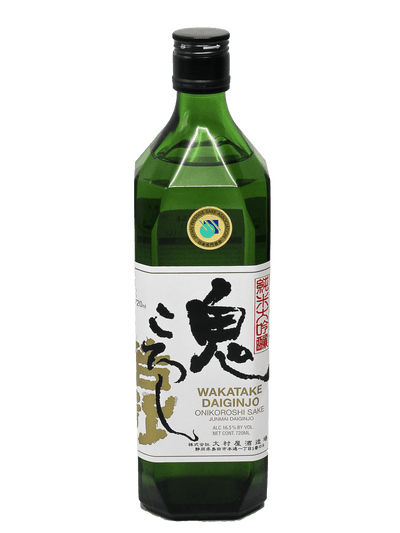Enjoying Rose Wine

Who hasn’t been seduced by the beautiful pink hues in a cold glass of wine, perfect for enjoying at sunset after a long day? Although rosé wines are commonly associated with warm weather and outdoor dining, their versatility and high level of drinkability invite us to uncork that rose wine bottle on countless occasions. Rose wine has increased in popularity in recent years, in part because it’s now so easy to buy rose wine online, and many should be taken seriously, with the days of uninspired White Zinfandel left behind.
Here is everything you need to know to enjoy them. Rosé wines are not just a recent trend. In fact, the first vineyards planted in the famous area of Provence, the oldest wine region in France and from which most French rosé comes, were made by the Greeks more than 2,600 years ago. By this time, it is believed that the actual color of red wines was…pink. These are usually not wines to age. Rose is most often produced specifically for its fruity flavor and is made to be drunk as soon as possible, although in places like Rioja in Spain, there are oak-aged examples in the Reserve (reserva) category.
Why is Rose wine pink?
In simple terms, rose wine is a kind of white wine made from red grapes, with some carefully controlled contact with the grape skins, which is where the color originates.
Remember: the pigments that give color to the wines are in the skin of the grape. The fresh juice of crushed grapes is clear, but when soaked with the skin for a short period of time, it turns a subtle pink color. The longer the wine spends in contact with its skins, the darker the pink hue will be. And the less time that passes, the lighter the color. This is how the winemaker will decide on the desired color, which can range from pale peach or onion skin to a brighter palette similar to a cherry or raspberry color.
Grape varieties and aromas
Even though rosé wines can be made from just one grape (such as Syrah), blends are also very common. Cinsault, Grenache, Cabernet Sauvignon, Syrah, Monastrell, Cariñena and Pinot Noir are just some of the varieties that may appear after you buy rose wine online. Depending on the grape variety that the rosé is made from, the flavor will vary. Generally speaking, rosé wines are known for their similarity to some light-bodied reds but with a crisper, fresher palate. On the nose, the aromas range from strawberries, cherries and raspberries to citrus, melon, celery and floral notes. Everything will depend on the way the rosé was made.
What are the Styles of Rose Wine?
When grape juice (must) is left in contact with the skins, this is called the maceration method of rose wine production. This is the most common type of rose and the way they make wine in Provence, France. Once the wine reaches the perfect color—typically after no more than 20 hours of skin contact, often much less—the skins are discarded so that the entire batch of must finishes fermentation the same way a white wine does. The profile of this type of rosé is dry, with vibrant acidity, bright fruit flavors, and a peach color, like the 2021 Domaine de Triennes Rose. Elegant and versatile, such wines are blends—in this case Cinsault, Grenache, Syrah, and Merlot—which gives it a unique character with lots of fresh fruit and a smooth texture.
Another method of production is called Saignèe, from the French for "to bleed" and is usually a by-product of bold red wines. After the grapes are picked to make red wines and then crushed, some of the juice is purged and placed in a new container to finish fermentation and finish as a rosé wine. Under this method, the color and flavor of these wines are more intense with a high concentration of fruit and a deeper structure on the palate. An example is the Larmandier-Bernier Rose de Saignee Premier Cru Extra Brut. There is a less common technique that combines red and white grapes to make a rosé wine. It specifically happens when a little red wine is added to tint a white wine with a pink hue. This technique is also widely used in the Champagne area, where they blend Pinot Noir with Chardonnay to make a brilliant rosé. The Fusion Method is also used in other areas with fewer rules like the New World.
What is the right temperature for rose wine?
The ideal temperature for drinking rosé wines is between 50 and 55 degrees Fahrenheit. To achieve this, simply place the bottle in the fridge for a few hours or leave it in the freezer for 30 minutes before serving. For those who like to add some ice cubes to the wine: this is not recommended as they will melt, changing the flavors and aromas.
What are the best food pairings for rose wine?
Rose wines’ versatile styles show up well when it's time to eat because they go amazingly well with just about anything! Being fresh and light, they work great with Asian dishes like sushi or Vietnamese spring rolls with peanut sauce. Thanks to their fruit, they are perfectly combined with spicy dishes such as Thai green curry, but also their cold freshness makes them a perfect match with white meats grilled on a barbecue. Of course, a traditional cheese and meat appetizer would never go wrong with a rosé.
Did you enjoy this introduction to help buy rose wine online? Read Bottle Barn’s other wine articles too!


















Leave a comment